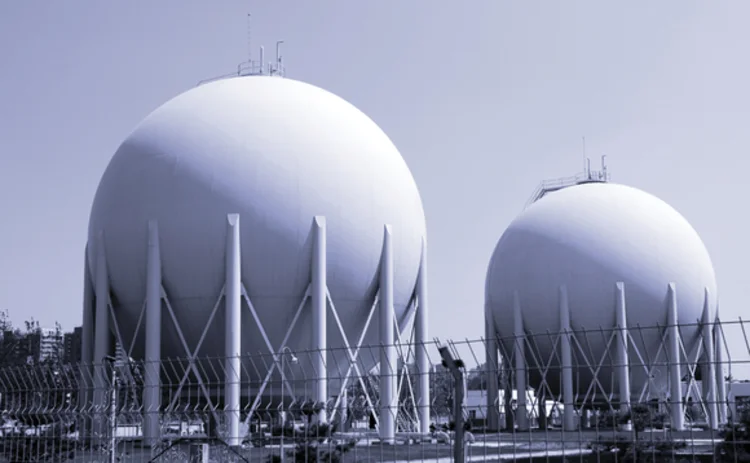
Surveying the future of Europe's natural gas markets
Demand for gas in Europe is set to increase in the coming years benefiting today’s most liquid hubs, say respondents to a survey carried out by Energy Risk and Baringa Partners. By Stella Farrington with comment from Nick Tallantyre

Europe’s falling nuclear production and green agenda will result in an increased demand for gas in the coming years, leading to more liquidity at several of the major European gas hubs, according to respondents of a survey carried out by Energy Risk and Baringa Partners.
PDF of this article, which includes all of the accompanying figures, is available here
The Dutch TTF gas hub is expected to experience the greatest increase in liquidity over the next five years, followed by Net Connect Germany (NCG) and the UK’s National Balancing Point (NBP) (see table 1).
Respondents said they expect TTF to grow in importance because of its geographical position, connecting the UK’s very liquid NBP hub with the growing German market. It is also well positioned to benefit from the combination of increasing imports of liquefied natural gas (LNG) and Russian gas into northern Europe. To this end, it is also expected to benefit from the Nord Stream pipeline, which came into operation on November 8, bringing Russian gas from the Baltic into Europe. When fully operational in late 2012, Nord Stream’s two lines will have the capacity to transport 55 billion cubic metres of Russian gas a year to the EU for at least 50 years, according to Nord Stream data.
Respondents also mentioned the growing use of TTF as a reference point, with one respondent stating the belief that Europe will move towards TTF as a benchmark that the other hubs will price against.
Liquidity growth is also expected in the German gas markets, with NCG getting the second highest score. Respondents felt that, given the size and location of the German market at the centre of Europe, an expansion is long overdue. Liquidity is expected to become increasingly concentrated around NCG, with GasPool losing out. GasPool came third in the list of hubs expected to exhibit a drop in liquidity (see table 2). Merging the two German hubs together could be a good future move, one respondent suggested.
Respondents who said they expected liquidity at the UK’s NBP to increase the most cited a business-as-usual scenario, with liquidity attracting liquidity and given the projections for the UK’s increasing import of LNG.
Commenting on this point, Nick Tallantyre, partner in Baringa’s wholesale energy practice, says: “Certainly, commitments such as Centrica’s deal with the Qataris announced recently would support the view that significant further investments in LNG supplies to the UK market will continue to support NBP’s role.”
In terms of where, if anywhere, respondents expect liquidity to drop, more than half (53%), said they don’t predict a fall in liquidity anywhere. Belgium’s Zeebrugge hub got the most votes, with 13% of respondents expecting liquidity to fall there. This was followed by 12% of respondents expecting liquidity to fall at the UK NBP and GasPool, 9% expecting a drop in PEG-S and 6% in PEG-N.
Respondents’ comments were that the Zeebrugge hub is not needed, and that the UK NBP could suffer as more volumes move to Continental Europe. Others felt it isn’t necessary to have two hubs in one country. GasPool could merge with NCG, and PEG-S and PEG-N are unlikely to both survive, respondents said.
Most of those answering expected the number of gas hubs to fall in coming years, dropping from the current 10 to around seven in five years’ time. Some 60% expected five or fewer hubs in 10 years’ time. Overall respondents felt the UK NBP, Germany’s NCG and Dutch TTF would become the main pricing points for western Europe.
“The results suggest significant convergence would be more likely on a 10-year horizon than on a five-year horizon,” says Tallantyre. “This represents a less significant move towards overall European market convergence, and suggests people are likely sceptical that the right infrastructure investments can be made to accelerate this – possibly a result of the current economic climate. It appears that regulatory harmonisation still has a little way to run.”
Europe’s gas supply
In terms of the gas supply mix to Europe by source, respondents don’t foresee drastic changes in the coming decade. On average, it was predicted that indigenous supply would fall to 24% of total supply from the current 31% largely picked up by Russian supply, increasing to 27% from 25%, and LNG increasing from 17% to 21% (see table 3).
When asked about gas demand, most respondents expected demand to rise in all the primary markets, with Germany showing the biggest increase, followed by the UK, Italy, France the Netherlands and Spain. The overall reasons given centred around Europe’s general move away from nuclear power and its green agenda promoting cleaner fuels such as gas.
“We were quite surprised at the significance of the rise expected for the UK market,” says Tallantyre. “This implies strength in the argument that increased gas-fired power generation will give rise to upward pressure on demand. However, the counterbalancing point would be an expectation of significant improvements in heating efficiency lowering demand levels. This aspect may be material, given the significant role of gas in UK domestic heating.”
The proportion of electricity generated by gas is expected to increase in all the primary markets, with Germany predicted to see the biggest increase due to its nuclear phase-out. Demand for gas is also expected to increase due to its ability to boost balancing to cover the intermittency of renewables.
Respondents were asked which hubs their own organisations would be focusing on in five years. TTF and NCG came joint first, with 57% of respondents saying they would be focusing on each one, while 53% said they will focus on the NBP (see figure 1). There was a clear difference in focus comparing financial institution responses with those from physical players. Twenty-nine per cent of financial respondents placed NBP in their top 3 areas of focus compared with 22% of physical asset-backed players. Looking at the German hubs, this represented a focus area for 36% of the financial respondents compared with 55% of physical asset-backed respondents.
When it comes to lowering the reliance on oil indexation for pricing gas contracts, respondents weren’t optimistic about it ending any time soon. Only 3% see oil indexation ending (defined by less than 25% of volumes indexed) by the end of 2012, 13% by the end of 2015 and 44% by the end of 2020. A significant 40% of respondents said they never expect it to end (see figure 2).
However, some respondents mentioned that the volatility in oil prices is making oil-indexation unappealingly risky, and that when many of the long-term contracts expire in 2020 they are likely to be replaced by gas-linked contracts. Others felt vested interests on the part of gas producers will never allow gas pricing to move away from oil indexation.
Baringa’s Tallantyre believes de-linkage between oil and gas in Europe may happen sooner than many people expect. He draws on the de-linked market model in the US as an example. “When compared to the US market, a lot of the structural reform required to delink is now in place in Europe, and we might expect this to take a clearer shape over the next decade through a combination of a physical market emerging for gas, good interconnections with production and demand, and a focus by the industry on delivering standard contract structures.”
Challenges ahead
In terms of challenges to European gas market development, respondents put economic uncertainty top of the list, followed by the need for greater infrastructure development, and third, the need for further regulatory development.
In terms of investment in infrastructure, respondents felt the most important area was in increased pipeline/interconnector capacity, followed by an increase in standardised exchanges/trading contracts and increased storage capacity.
Respondents were asked to list up to three regulatory issues they felt need to be addressed to accelerate the harmonisation of the gas market. Consistency of tariff schemes, cross-border harmonisation, market transparency, contract standardisation and harmonisation of balancing rules were all mentioned several times.
When asked about the impact of the recent financial crisis on their company’s trading operations, respondents said the biggest effect has been the increased credit risk, followed by difficulty in accessing liquidity/trading counterparts, followed by difficulty in accessing capital.
Respondents were then asked what they see as the key portfolio strategies for success in the new gas markets. An increased focus on portfolio optimisation was top choice, followed by an increased scale of trading, with an increased focus on asset optimisation coming third. Interestingly, but not surprisingly, none of the financial institutions named ‘increased proprietary trading’ as a strategy for success.
When asked about what they see as the key operational strategies for success in the new gas markets, opinion was divided. A move towards a single pan-European trading location got the most number of votes, followed by standardising operational processes. But in contrast to the first answer, the third highest answer was a move towards local/regional trading locations. This shows two divergent strategies emerging, with some seeing rationalisation towards one pan-European trading location being the best way forward, while others favour a move towards regional locations.
Survey respondents said they expect market and credit risk to increase as the European gas markets expand, with a corresponding drop-off in liquidity risk. Several respondents said they intend to mitigate these increased risks by further hedging.
Respondents were asked which functions within their trading business will require the greatest focus for change. Top of the list came portfolio optimisation, followed by market data sourcing and analysis, with risk management third (see table 4).
In terms of the allocation of risk capital to their gas trading activities, 50% of respondents – or 75% of respondents at financial institutions – said they expect an increase in risk allocation, with 40% of all respondents expecting no real change (see figure 3). Respondents were asked whether they expect a greater or lesser rate of return for each unit of risk capital allocated. Only 8% said they expected a much greater return, while 28% expected no change (see figure 4).
Respondents were then asked what specific challenges within their own business prevent them realising their ambitions. A shortage of key skills and knowledge was the favoured choice, followed by process/operational changes and thirdly the external approval process to trade (such as shareholder buy-in or regulatory compliance).
Finally, respondents were asked about their company’s business and IT systems’ readiness when moving into new markets. Some 78% said they always enable systems to support the new market first before trading commences, while just 22% said they start trading the market first and then deal with support for it later.
The gas market in Europe is clearly entering a key stage of transition, where the liberalisation of the markets that started over a decade ago is now meeting the challenges created by a substantial redrawing of gas flows into Europe.
Only users who have a paid subscription or are part of a corporate subscription are able to print or copy content.
To access these options, along with all other subscription benefits, please contact info@risk.net or view our subscription options here: http://subscriptions.risk.net/subscribe
You are currently unable to print this content. Please contact info@risk.net to find out more.
You are currently unable to copy this content. Please contact info@risk.net to find out more.
Copyright Infopro Digital Limited. All rights reserved.
You may share this content using our article tools. Printing this content is for the sole use of the Authorised User (named subscriber), as outlined in our terms and conditions - https://www.infopro-insight.com/terms-conditions/insight-subscriptions/
If you would like to purchase additional rights please email info@risk.net
Copyright Infopro Digital Limited. All rights reserved.
You may share this content using our article tools. Copying this content is for the sole use of the Authorised User (named subscriber), as outlined in our terms and conditions - https://www.infopro-insight.com/terms-conditions/insight-subscriptions/
If you would like to purchase additional rights please email info@risk.net
More on Risk management
Japanese megabanks shun internal models as FRTB bites
Isda AGM: All in-scope banks opt for standardised approach to market risk; Nomura eyes IMA in 2025
Benchmark switch leaves hedging headache for Philippine banks
If interest rates are cut before new benchmark docs are ready, banks face possible NII squeeze
Op risk data: Tech glitch gives customers unlimited funds
Also: Payback for slow Paycheck Protection payouts; SEC hits out at AI washing. Data by ORX News
The American way: a stress-test substitute for Basel’s IRRBB?
Bankers divided over new CCAR scenario designed to bridge supervisory gap exposed by SVB failure
Industry warns CFTC against rushing to regulate AI for trading
Vote on workplan pulled amid calls to avoid duplicating rules from other regulatory agencies
Top 10 op risks: Change brings challenges as banks splash the cash
Higher interest margins and a trend toward insourcing drive major tech projects
Top 10 op risks: deepfakes drive rise in fraud fears
External fraud re-enters top 10 as artificial intelligence provides new tools for criminals
Should the ECB stress-test counterparty default risks?
The US Fed already does, but it is notable that EU banks were less exposed to Archegos
Most read
- Top 10 operational risks for 2024
- The American way: a stress-test substitute for Basel’s IRRBB?
- Filling gaps in market data with optimal transport








